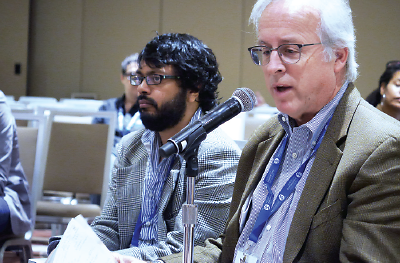Wherever General Medicine Went, Psychiatry Was There First
Abstract
Experts say that many of the innovations trumpeted as part of the health care reform movement actually arose from psychiatric practice.
New models of medical care may owe more to psychiatry than either general medicine or psychiatry may realize, said speakers at IPS: The Mental Health Services Conference in New York in October.
Those big state mental hospitals, now so discredited, may have been the first regional, population-based accountable care organizations, given that they covered all the general medical, dental, and mental health needs of the patients in their catchment areas. However, that broad-based view of psychiatric care declined as biological psychiatry rose, said Vivek Datta, M.D., M.P.H., a PGY-4 at the University of Washington in Seattle.
“The focus on cells and molecules and genes deflected attention from social risk factors or explanations,” said Datta. “Outside political pressures transformed ‘patients’ into ‘consumers.’ Mental illness was uncoupled from the social environment and moved to the marketplace.”
Now, in the Affordable Care Act (ACA) era, there is a return to population health in which Medicaid expansion, parity rules, the elimination of preexisting conditions as a barrier to care, and new models of service delivery are bringing general medical and mental health services to a wider population.
Such changes have also brought greater attention to issues surrounding the health care of people who make exceptionally high use of the medical system (“high utilizers”), many of whom have high rates of mental health problems.
As the ACA leads to more integrated general medical and mental health care, experts hope that this combination will bring improvements in patient adherence and reductions in frequent and costly returns by patients to the clinic or emergency room. By driving down service use, both accountable care organizations and the Medicaid system can benefit from the savings.

Kenneth Thompson, M.D., says that many of the innovations of the health care reform movement actually arose from psychiatric practice. At left is Vivek Datta, M.D., M.P.H.
In fact, this special attention to high utilizers serves as a reminder that many of the innovations trumpeted as part of the health care reform movement actually arose from psychiatric practice, said Kenneth Thompson, M.D., a clinical assistant professor of psychiatry at the University of Pittsburgh.
Assertive community treatment (ACT) programs were developed decades before the idea was adapted for general medical care, said Thompson. This intervention is a team-oriented model that involves providing services to individuals in the communities in which they live. The ACT model provides services for general medical, mental health, and substance abuse in a coordinated and targeted fashion.
“We gave it to them, but we forgot to tell them,” he said. The list of similar uncredited borrowings goes on.
The underfunded community mental health centers antedated Federally Qualified Health Centers, which are well supported on both sides of the Congressional aisle. Also, the case-management approach to treating psychiatric patients recognized early on what are now called the social determinants of health—poverty, housing, and employment, said Thompson. The doctor-patient relationship at the core of primary care today is merely another version of psychiatry’s therapeutic alliance.
In addition, the emphasis on involving patients in their own care reflects psychiatry’s recovery model.
“We know that patients have capabilities, not just disorders,” he said. “The physician can’t help the patient alone. It takes a patient actively involved in self-care to manage long-term, persistent problems.”
Finally, the new emphasis on population health and the expansion of public resources is a reminder that psychiatry is the field of medicine whose patients are most dependent on public funding and services because they are often too impaired to participate in the traditional working world, said Thompson.
“Psychiatry itself has not been paying attention to what it is we’ve been doing relative to what its meaning might be for the rest of medicine,” he said. “And there is a legacy we’ve been leaving behind that is unrecognized.” ■



